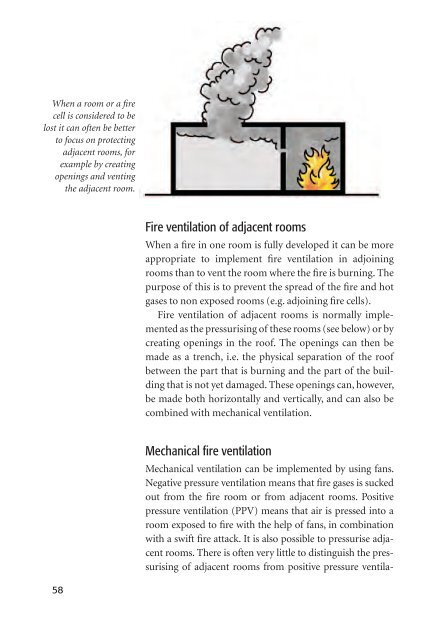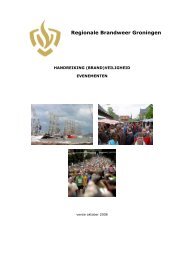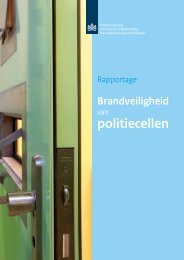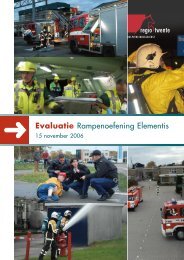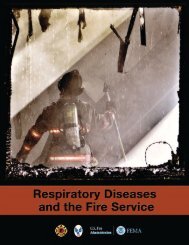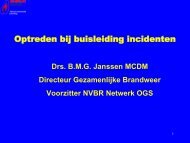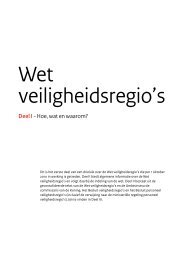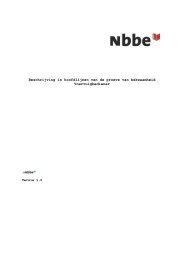Fire ventilation
Fire ventilation
Fire ventilation
- No tags were found...
You also want an ePaper? Increase the reach of your titles
YUMPU automatically turns print PDFs into web optimized ePapers that Google loves.
When a room or a firecell is considered to belost it can often be betterto focus on protectingadjacent rooms, forexample by creatingopenings and ventingthe adjacent room.<strong>Fire</strong> <strong>ventilation</strong> of adjacent roomsWhen a fire in one room is fully developed it can be moreappropriate to implement fire <strong>ventilation</strong> in adjoiningrooms than to vent the room where the fire is burning. Thepurpose of this is to prevent the spread of the fire and hotgases to non exposed rooms (e.g. adjoining fire cells).<strong>Fire</strong> <strong>ventilation</strong> of adjacent rooms is normally implementedas the pressurising of these rooms (see below) or bycreating openings in the roof. The openings can then bemade as a trench, i.e. the physical separation of the roofbetween the part that is burning and the part of the buildingthat is not yet damaged. These openings can, however,be made both horizontally and vertically, and can also becombined with mechanical <strong>ventilation</strong>.Mechanical fi re <strong>ventilation</strong>Mechanical <strong>ventilation</strong> can be implemented by using fans.Negative pressure <strong>ventilation</strong> means that fire gases is suckedout from the fire room or from adjacent rooms. Positivepressure <strong>ventilation</strong> (PPV) means that air is pressed into aroom exposed to fire with the help of fans, in combinationwith a swift fire attack. It is also possible to pressurise adjacentrooms. There is often very little to distinguish the pressurisingof adjacent rooms from positive pressure ventila-58


